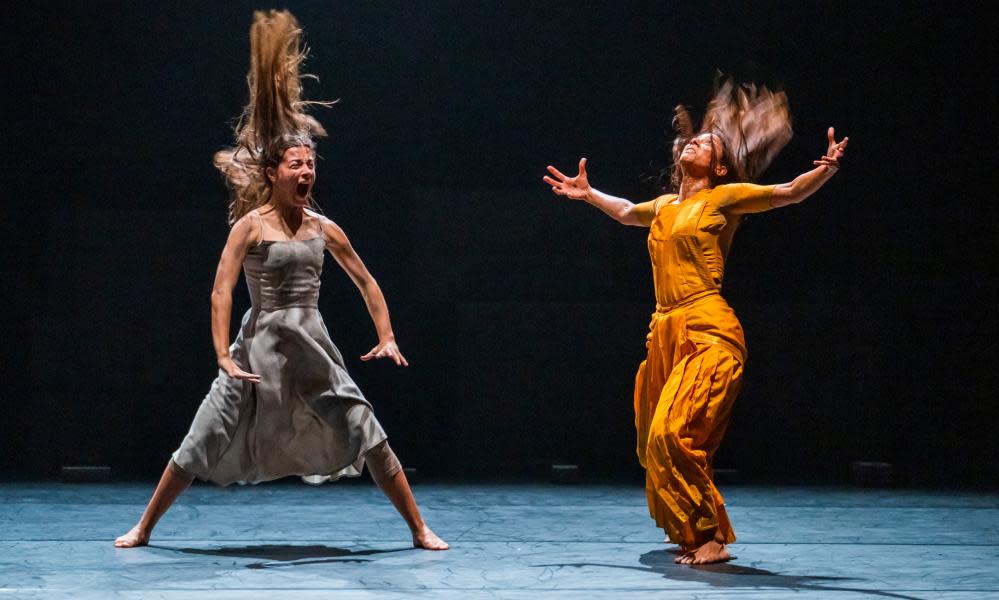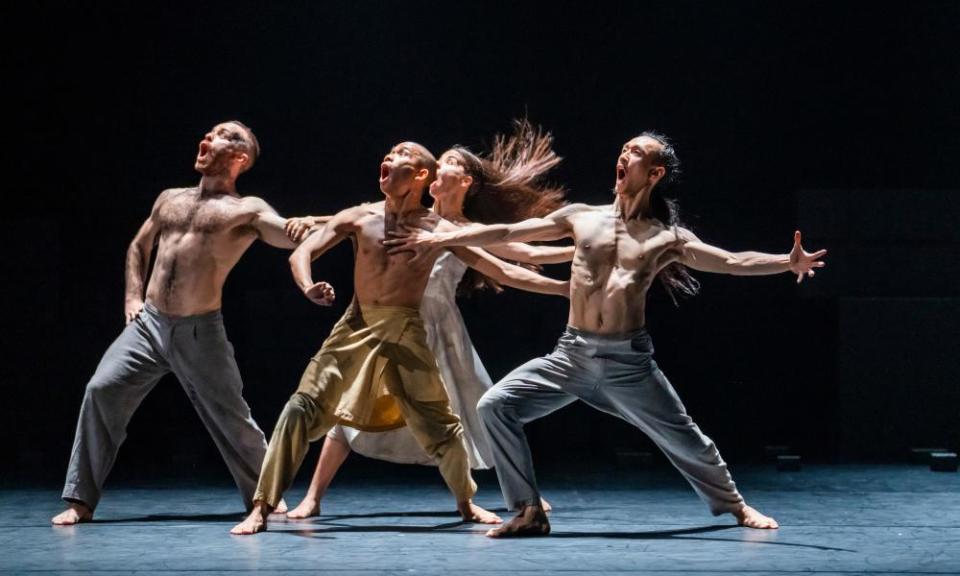Outwitting the Devil review – Akram Khan’s dancers defy all limits

Purely in terms of the dancing, the physical mastery, the jaw-dropping shape-shifting, you will not see a more impressive performance this year. The speed at which the dancers in Akram Khan’s Outwitting the Devil scroll through the space or across the floor – it is as if they’re another species.
James Vu Anh Pham’s body whips and whorls, deftly cutting the air and leaving no trace. There’s the weightless virtuosity of the mercurial Jasper Narvaez, his spine peeling back in long curves, and Luke Jessop performing a sharp muscular semaphore that looks like krump dance rendered in CGI. Sometimes you can’t quite believe what you’re seeing.
You might also be blown away by the atmosphere, a level of intensity that is brave, that sucks you in with its gravity. The stage is dim and hazy (lit – or rather hardly lit – by Aideen Malone), while composer Vincenzo Lamagna arranges thick strings, seismic rumbles, silent pauses and sudden shocks of volume that leave you vibrating at the same frequency as the performance.

But to what end? Well, who knows. Outwitting the Devil is inspired by the 4,000-year-old epic of Gilgamesh, about a demigod seeking immortality after the death of his friend and failing to achieve it. Gilgamesh, we assume, is the white-haired François Testory (a one-time dancer with Lindsay Kemp) and represented in his older years. Perhaps at one point he’s also Jessop. Is that body on the floor Gilgamesh’s friend Enkidu or the guardian of the cedar forest? Maybe no actor is meant to be anyone in particular. Bharata natyam dancer Mythili Prakash certainly looks like a powerful god. What there seems to be is death, grief, screams, some animals, a man who looks like he’s melting and a continually shifting sense of action and identity.
Designer Tom Scutt’s understated set consists of black bricks and slabs, in lines or in piles on the stage. It is probably supposed to recall the stone tablets on which the Sumerian poem was written, but the stage is too dark to glean much more and it gets us no closer to a sense of place, journey, character or relationships between the people in front of us. Dance doesn’t have to deliver all these things, but we know some of it was there in the roots of the work. Here it is frustratingly impossible to grab hold of.
This show is part of the Carnival of Shadows season, celebrating 20 years of Khan’s company. In that time he has gone from an audaciously talented young dancer, creating a new language combining kathak and contemporary dance, to a globally in-demand choreographer, making experimental dance-theatre that premieres at the big European festivals. Reworking myths is his prime pursuit and, with dramaturg Ruth Little, the method seems to be to peel away layers of theme or narrative with the aim of leaving something raw underneath.
But in this instance the show loses shape in a way that leaves the audience baffled. There’s occasional text projected above the stage, a translation of the French voiceover, although these are no more than fragments of Gilgamesh’s story.
But the dancing – just hold on to that. To see bodies defy all ordinary limits, to be absorbed in their constant transformation, to witness the grace and control, to feed on their ever-changing energy and be drawn into their orbit. That is something that needs no explanation.
At Sadler’s Wells, London, until 27 November. Carnival of Shadows season continues until 4 December.


